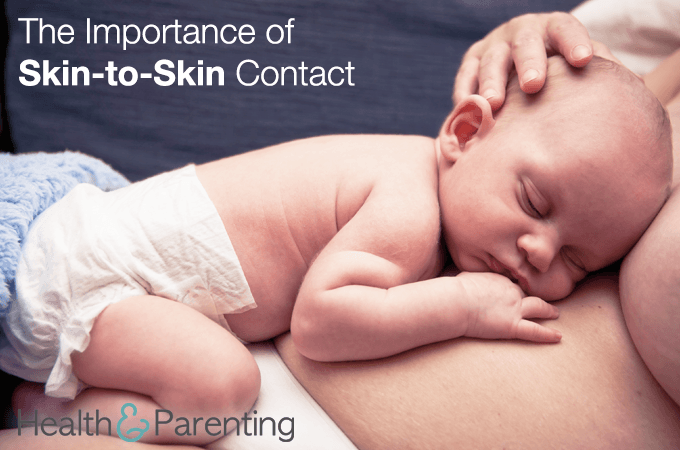As you are planning your birth, have you thought about your baby’s transition to the outside world? How would you like to greet your baby, and how would you like to spend those precious first moments? Recent research shows babies do best when given skin-to-skin contact with mom for the first hour after birth – or until the first breastfeeding takes place.
Amazingly, babies seem to be pre-programmed to expect contact with mom after birth. When a baby is left prone on mom’s abdomen after an unmedicated birth, he begins to use his reflexes to get to the breast. Once there, he will usually latch and begin nursing within the first hour. You don’t need to be that laissez faire about it – you can be more deliberate about snuggling your baby in a cradle hold and offering the breast. But babies know what to do – it’s sometimes our routines and procedures that get in the way!
The Benefits of Skin-to-Skin:
Babies who spend time skin-to-skin with their mothers after birth:
- Have more regular breathing and heart rate,
- Cry less (thus conserving energy),
- Stay warmer than babies in standard care (placed on a warming bed apart from their mothers), and
- Breastfeed better and longer.
But I’m Having a Cesarean Birth …
Doctors are now recognizing that skin-to-skin time with their mothers is a basic necessity for newborns, and are helping this to happen even when mom and baby need a surgical birth. Sometimes referred to a ‘gentle cesarean,’ baby is placed skin-to-skin on mom’s chest as the surgical repair is made, and remains there as mom is recovering. Let your doctor know ahead of time that skin-to-skin is important to you, and work with your healthcare team to develop a plan for successfully achieving a ‘gentle cesarean.’
Sometimes Skin-to-Skin Can’t Be Done
If mom or baby need life-saving care in the minutes or hours after birth, skin-to-skin will need to be postponed. If mom is ill, dad can take over skin-to-skin duties. If baby is ill, skin-to-skin can be done as soon as baby is stable. Spending time skin-to-skin can sometimes heal the emotional wounds of a traumatic birth – for both mom and baby – even if it’s done months later.
Does it end after that first hour?
Skin-to-skin time is great for baby at any age – whether minutes, days or weeks old. This is especially true for babies who are having breastfeeding difficulties. If you imagine your baby’s first three months of life as a 4th trimester, you can help baby adapt to life outsider the womb by recreating a womb-like environment – constant carrying, skin-to-skin, breastfeeding on demand, etc.
Written by Michelle, lactation consultant, childbirth instructor, writer and editor, and mom to 4 busy kids
This information is not intended to replace the advice of a trained medical doctor. Health & Parenting Ltd disclaims any liability for the decisions you make based on this information, which is provided to you on a general information basis only and not as a substitute for personalized medical advice. All contents copyright © Health & Parenting Ltd 2017. All rights reserved.










